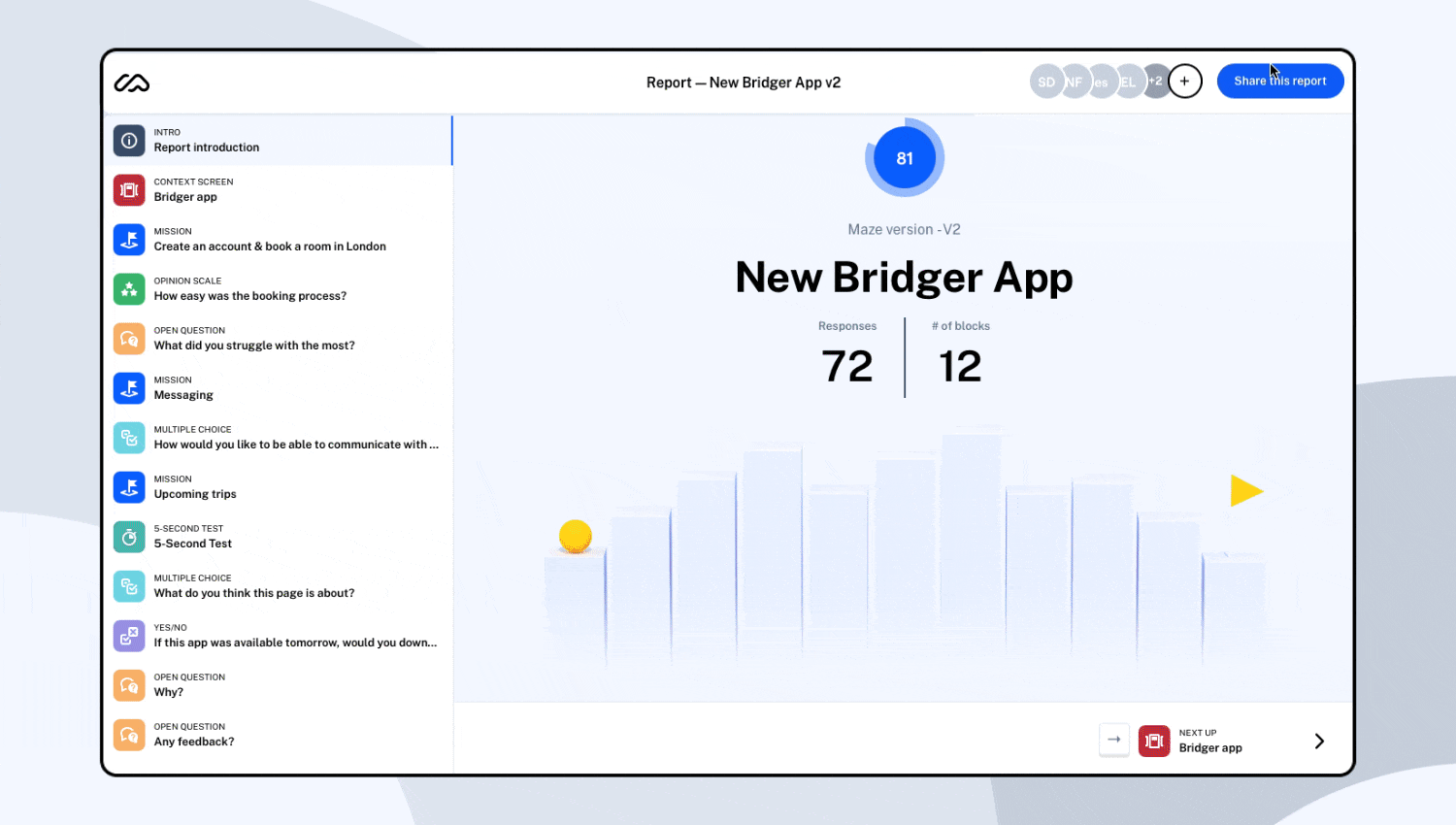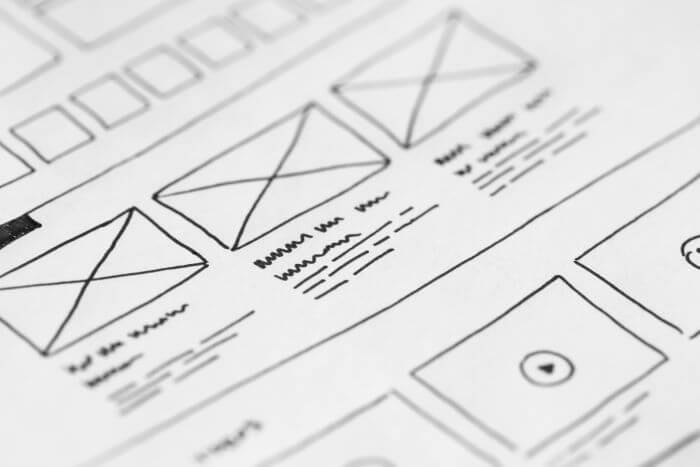For those who aren’t familiar with UI and UX, you may think they’re pretty much the same thing. However, one focuses on user experience, whilst the other concentrates on the user interface and how the user interacts with the product or service. In this article we will help you in Understanding the Differences Between UI & UX Design.
As both are different, it’s important to know how they’re used within product design and development. In this article, you’ll understand how both these methods work and contribute towards product design and development, as well as what makes them different.
Table of Contents
What is UI Design?
UI stands for user interface and it’s all about the product’s interface and how it’s presented to the user. From the look and feel of it, to the functionalities available for the user to interact with.
A user interface is a point of interaction between the digital device being used and the user who is using it. So, this could be a touch-screen at your local cinema to the check-out kiosk at the grocery store.
When it comes to online products and services like a website or app, the user interface design is one that covers many features. 88% of users are less likely to return to a website after a bad user experience. With that said, an effort must be made to provide the right features within the interface of the site.
From the icons and buttons used, typography, imagery and how responsive the design is for the user. It’s all about making sure that the product or service being used is highly intuitive.
As UI designer, the objective is to guide the user visually through the product’s interface in the best way possible. It contributes partly to the overall experience that the user has.
What is UX Design?

UX stands for user experience and is a human-led way of designing products, whatever product it may be. It encompasses everything when it comes to the end-user’s interaction, whether that’s the company website, an app or another product.
User experience applies to anything that’s contributing to the experience that the user is having. It’s the interaction the user and the product have and how that can influence a positive outcome.
For UX, there’s likely going to be more questions regarding the experience of the user. For example, how easy was it for them to click and add items to the basket on the website? Or is it easy enough for them to find the right section needed, on the app?
The main focus is on the user’s experience and how this product or service makes them feel. Ultimately, you want the user to complete their desired task or tasks as easily as possible. For an UX designer, this involves observing and conducting task analyses to see where they’re going right and where they’re going wrong.
A lot of businesses benefit from the practice of user experience both digitally and non-digitally. It can help build stronger foundations with your customers so that they remain loyal to the company for longer.
What are the Differences Between the Two?
The two terms together are often mixed up due to both being related to the user. Whilst they may get mixed up, they both work very differently. Here are a few differences between the two that are worth highlighting.
UX Relates to Overall Feel vs UI Relates to How it Looks and Functions
The main difference between the two is that UX is about how the user feels when using the product whereas UI is on how the interface of the product looks and functions.
Any user experience design will involve questioning how they can make the user’s experience of the product or service better than before. They’ll look at the data and the type of users they’re targeting. They’re considering how everything they come across affects their feelings towards the product.

User interface designers will address and troubleshoot the visuals and what the user interacts with. They make sure those functionalities work in order to fulfil the needs that the user has.
UX is About the Entire Journey vs UI Brings that Journey to Life
The customer journey is something that is significant when it comes to customer experience. According to MyCustomer, 85% of professionals who have used customer journey maps, found that it increased their customer’s satisfaction and had fewer complaints.
UX is all about the customer’s entire journey from the moment of discovery, using the product and then accomplishing whatever task was needed. Whereas, when it comes to UI, there’s more focus on how to bring that journey to life. UX has provided the skeleton framework of the product and now the UI designers will bring it to fruition.
UX Solves User Problems vs UI Creates Intuitive and Interactive Products
Solving a user’s problem can help satisfy their needs, which results in a better customer experience. UX solves user problems by identifying where these are within the customer’s journey and with the contents of the product itself.
For UI, the solution lies in creating intuitive and interactive products that will ensure the user benefits from those issues that have been solved through UX.
How UI and UX Can Work Together

If it isn’t already apparent that UI and UX need one another, then let’s dive in deeper and explain how they work together.
For any product development, both UI and UX designers are needed within this collaborative effort. It’s important that all team members working on this product are communicating to one another. From the UI and UX designers to those in marketing and the project managers overseeing the project.
UI and UX can go hand-in-hand together. For example, when it comes to conducting user research, UX designers can figure out exactly what the product needs to do in order to provide that to the target audience. They can work out what features the product needs to have and how the user journey is mapped out.
With that all provided, the UI designers can take all of this knowledge and create the right functions and visual aesthetics needed.
A Style Guide is the Key to Collaboration for UI and UX
Style guides are like the foundation for UI and UX designers, as well as the rest of the team members involved in the project. It’s a collaborative effort that helps bring together everything the product needs and what the users want.
By having a style guide like this in place, it can help provide consistency and ensure everyone is on the same page. With that being said, here are a few things that you’ll want to include within the guide itself.
Branding
The style guide should have a section on how the branding should come across in any product or service that’s been developed. This is important for both UX and UI designers because it’s important to have the brand image or messaging be apparent to the user. Whether that’s the customer experience is a clear indicator of the brand to the interface having similar design features and functionalities that the brand is known to use.
Typography and color palette
Keeping things consistent is key to making it a recognizable product that the user can relate back to your business. Certain visual elements like typography and color palette contribute to both the user interface and the user experience. For the user, you want them to be able to see everything clearly and without facing any issues visually.
Imagery
Images are an important part of the product’s development and that includes any graphics too, all of which are necessary. It all contributes to the reflection of the brand identity and for many of us, we find visual imagery can be more engaging than just seeing a load of words.
Think about how you can ensure all your imagery used is aligning with the brand and style of your business in general.
UI components
Your UI components will be made up of a variety of features. This includes buttons, input fields, forms, toolbars, menus, layouts, lists and grids to name but a few. These components need to be clean and functional in their usability. It’s a priority that these UI components are helping the user get what the purpose of these features are for in helping them complete the tasks or tasks that need doing.
There are plenty of other elements to include in your style guide, but this provides a useful starting point for most.
Incorporate Both UI & UX Design into Your Business
Whatever product development or design you have brewing away, it’s important that UI and UX design is a big part of its process. We can cater towards the overall success that the product or service that you create will provide for your business.
UI and UX designers can help provide the best interactions and experiences for your users, whether they’re new to your products and services or not. Hopefully, with the guidance given and the differences explained, you’ll know how important it is to incorporate both into your development projects.
Join The Logo Community
We hope this article has helped in Understanding the Differences Between UI & UX Design. If you would like more personal tips, advice, insights, and access to our community threads and other goodies, join me in our community.
You can comment directly on the posts and have a discussion with Andrew, the Founder of The Logo Creative.
*TIP – We recommend Skillshare to learn online. There are tons of classes for everything including graphic design, web design, marketing, branding and business related courses. Get a free trial with our link and you won’t regret it Trust us!
 Author Bio
Author Bio
Natalie Redman is a freelance writer for many clients across multiple industries. Natalie has two years of copywriting experience. Natalie has a wide range of experience copywriting for web pages for businesses across many industries. She’s also an owner of two blog websites and a Youtube content creator.



